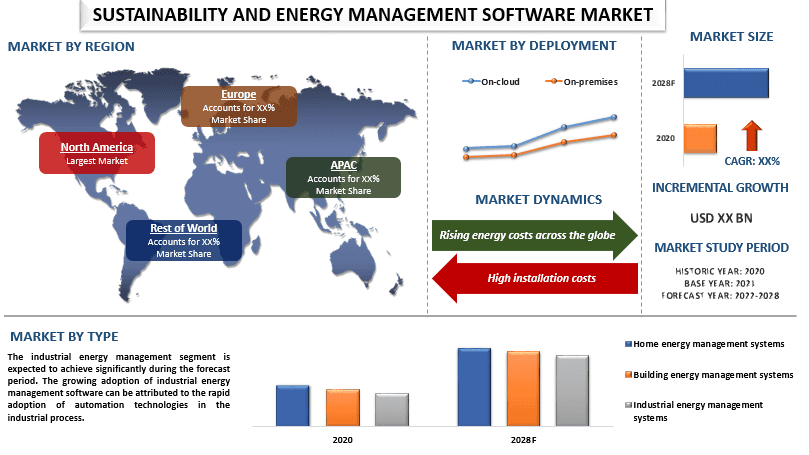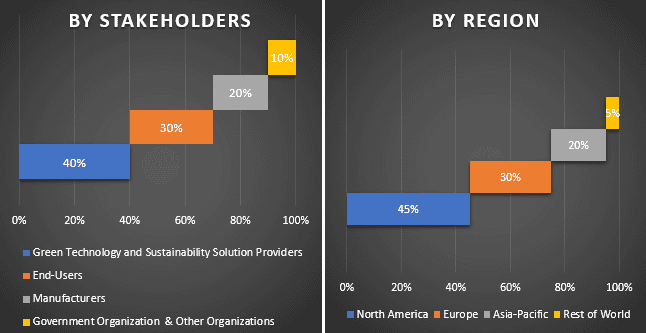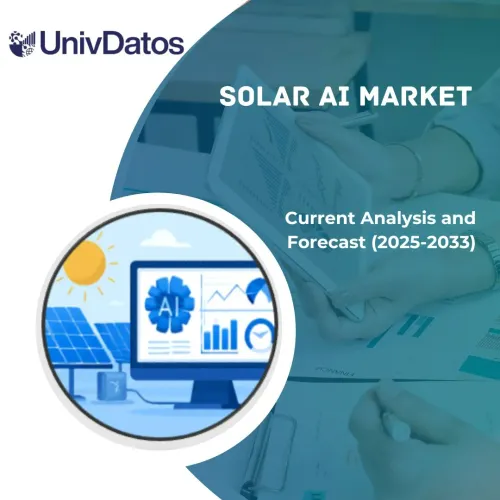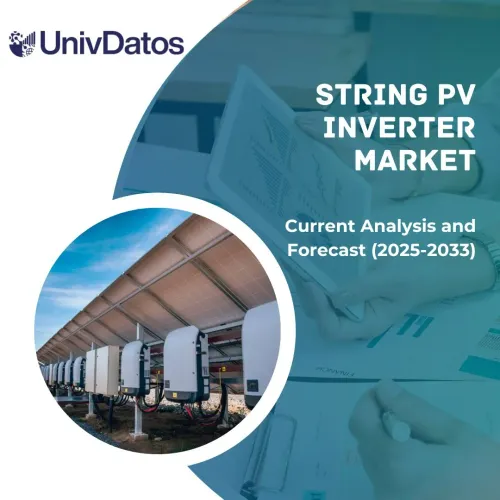- Home
- Chi siamo
- Settore
- Servizi
- Lettura
- Contattaci
Mercato del software per la gestione della sostenibilità e dell'energia: analisi e previsioni attuali (2022-2028)
Enfasi su tipo (Sistemi di gestione dell'energia domestica, Sistemi di gestione dell'energia degli edifici e Sistemi di gestione industriale); Implementazione (Cloud e On-Premises); Utente finale (Settore automobilistico, Automazione degli edifici, Costruzioni, Produzione, Petrolio e gas, Prodotti farmaceutici e Altri); e Regione/Paese

RICHIEDI UN PDF DI ESEMPIO GRATUITO
Si prevede che il mercato globale del software per la gestione della sostenibilità e dell'energia crescerà con un CAGR elevato di circa l'11% durante il periodo di previsione (2021-2027).Il mercato globale del software per la gestione della sostenibilità e dell'energia è in crescita a causa degli investimenti crescenti effettuati da grandi organizzazioni e governi in tutto il mondo per i progressi tecnologici per un uso efficiente delle risorse rinnovabili e non rinnovabili esistenti. Inoltre, l'aumento della consapevolezza ambientale e l'aumento delle preoccupazioni tra le organizzazioni e gli individui sul riscaldamento globale agiscono come le principali forze trainanti del mercato globale del software per la gestione della sostenibilità e dell'energia. Inoltre, le crescenti emissioni di carbonio a livello globale stanno aumentando a un ritmo allarmante,ad esempio, le emissioni globali di CO2 legate all'energia sono rimaste a 31,5 GT, contribuendo alla CO2 a raggiungere la sua più alta concentrazione annuale media nell'atmosfera di 412,5 parti per milione nel 2020, circa il 50% in più rispetto a quando è iniziata la rivoluzione industriale.Questi fattori dovrebbero guidare il mercato del software per la gestione della sostenibilità e dell'energia.
Approfondimenti presentati nel rapporto
“Tra i tipi, il segmento dei sistemi di gestione industriale detiene la quota maggiore”
In base al tipo, il mercato è segmentato in sistemi di gestione dell'energia domestica, sistemi di gestione dell'energia degli edifici e sistemi di gestione industriale. I sistemi di gestione dell'energia industriale dovrebbero raggiungere un CAGR significativo durante il periodo di previsione. La crescente adozione del software per la gestione della sostenibilità e dell'energia nei sistemi di gestione dell'energia industriale può essere attribuita alla crescente necessità di conversazione energetica per il risparmio sui costi nelle industrie. Inoltre, la maggior parte del consumo di energia è fatto da enti industriali/enti manifatturieri, il che si traduce nella generazione di gas serra che causano emissioni di carbonio..
RICHIESTA DI PERSONALIZZAZIONE
“Tra l'implementazione, il segmento on-cloud detiene la quota maggiore”
In base all'implementazione, il mercato è segmentato in cloud e on-premises. Il segmento cloud dovrebbe raggiungere un CAGR considerevole durante il periodo di previsione. La crescente domanda di servizi cloud può essere attribuita alla convenienza dei servizi cloud. Poiché le aziende possono eliminare hardware non necessario o risorse on-premises rigide e ridimensionare facilmente le risorse di calcolo in base alle proprie esigenze aziendali uniche. Inoltre, l'integrazione di soluzioni e servizi basati su cloud aiuta le organizzazioni a ridurre significativamente i loro costi operativi poiché sono accessibili da qualsiasi luogo.
“Tra gli utenti finali, il segmento manifatturiero detiene la quota maggiore”
In base all'utente finale, il mercato è segmentato in settore automobilistico, automazione degli edifici, costruzioni, produzione, petrolio e gas, prodotti farmaceutici e altri. Il segmento manifatturiero dovrebbe acquisire importanza durante il periodo di previsione. La crescente domanda di software per la gestione della sostenibilità e dell'energia nel segmento manifatturiero può essere attribuita al crescente volume di produzione che deve essere fatto, per produrre per la popolazione globale in continua crescita,ad esempio, nell'anno la produzione ha rappresentato il 76,6% dell'impatto ambientale totale degli Stati Uniti, secondo la guida ai costi di produzione del NIST.
“Il Nord America rappresenta uno dei maggiori mercati di software per la gestione della sostenibilità e dell'energia”
Per una migliore comprensione delle dinamiche di mercato del mercato del software per la gestione della sostenibilità e dell'energia, è stata condotta un'analisi dettagliata per diverse regioni del mondo, tra cui Nord America (Stati Uniti, Canada e il resto del Nord America), Europa (Germania, Francia, Spagna, Regno Unito, Italia e resto d'Europa), Asia-Pacifico (Cina, India, Australia, Giappone e resto dell'APAC), il resto del mondo è stato condotto. Il Nord America ha detenuto una quota di rilievo del mercato globale del software per la gestione della sostenibilità e dell'energia nel 2020 e dovrebbe mostrare un tasso di crescita prominente durante il periodo di previsione. Ciò può essere attribuito alla presenza di fornitori leader di software per la gestione della sostenibilità e dell'energia e all'integrazione di cloud e IoT con le soluzioni di mercato del software per la gestione della sostenibilità e dell'energia. Inoltre, un aumento degli investimenti da parte dei principali attori, nonché del governo, per lo sviluppo di tecnologie avanzate per la conservazione dell'energia e soluzioni di sostenibilità alimenta la crescita del mercato. In paesi come Stati Uniti e Canada, ci sono numerose iniziative e investimenti governativi, ad esempio, nel 2020, il governo degli Stati Uniti ha impegnato un investimento federale di 1,7 trilioni di dollari in resilienza climatica ed energia pulita nel corso dei prossimi 10 anni.
Motivi per acquistare questo rapporto:
- Lo studio include l'analisi di dimensionamento e previsione del mercato convalidata da esperti chiave del settore autenticati
- Il rapporto presenta una rapida revisione delle prestazioni complessive del settore a colpo d'occhio
- Il rapporto copre un'analisi approfondita dei principali colleghi del settore con particolare attenzione alle principali finanze aziendali, al portafoglio prodotti, alle strategie di espansione e agli sviluppi recenti
- Esame dettagliato di driver, vincoli, tendenze chiave e opportunità prevalenti nel settore
- Lo studio copre in modo completo il mercato in diversi segmenti
- Analisi a livello regionale approfondita del settore
Opzioni di personalizzazione:
Il mercato globale del software per la gestione della sostenibilità e dell'energia può essere ulteriormente personalizzato in base alle esigenze o a qualsiasi altro segmento di mercato. Oltre a ciò, UMI capisce che potresti avere le tue esigenze aziendali, quindi sentiti libero di connetterti con noi per ottenere un rapporto che si adatti completamente alle tue esigenze.
Indice
Metodologia di ricerca per l'analisi del mercato globale del software per la gestione della sostenibilità e dell'energia (2022-2028)
L'analisi del mercato storico, la stima del mercato attuale e la previsione del mercato futuro del mercato globale del software per la gestione della sostenibilità e dell'energia sono stati i tre passaggi principali intrapresi per creare e analizzare l'adozione del mercato del software per la gestione della sostenibilità e dell'energia nelle principali regioni a livello globale. È stata condotta un'esauriente ricerca secondaria per raccogliere i numeri storici del mercato e stimare le dimensioni attuali del mercato. In secondo luogo, per convalidare questi approfondimenti, sono state prese in considerazione numerose scoperte e ipotesi. Inoltre, sono stati condotti anche ampi colloqui primari, con esperti del settore lungo tutta la catena del valore del mercato globale del software per la gestione della sostenibilità e dell'energia. Dopo l'assunzione e la convalida dei numeri di mercato attraverso interviste primarie, abbiamo impiegato un approccio top-down/bottom-up per prevedere le dimensioni complete del mercato. Successivamente, sono stati adottati metodi di ripartizione del mercato e di triangolazione dei dati per stimare e analizzare le dimensioni del mercato dei segmenti e dei sottosegmenti a cui appartiene il settore. La metodologia dettagliata è spiegata di seguito:
Cerca maggiori dettagli sulla metodologia di ricerca
Analisi delle dimensioni del mercato storico
Passaggio 1: studio approfondito delle fonti secondarie:
È stato condotto uno studio secondario dettagliato per ottenere le dimensioni storiche del mercato del mercato del software per la gestione della sostenibilità e dell'energia attraverso fonti interne dell'azienda comerelazione annuale e rendiconti finanziari, presentazioni delle prestazioni, comunicati stampa, ecc.e fonti esterne tra cuiriviste, notizie e articoli, pubblicazioni governative, pubblicazioni dei concorrenti, rapporti settoriali, database di terze parti e altre pubblicazioni credibili.
Passaggio 2: segmentazione del mercato:
Dopo aver ottenuto le dimensioni storiche del mercato del mercato del software per la gestione della sostenibilità e dell'energia, abbiamo condotto un'analisi secondaria dettagliata per raccogliere approfondimenti e quote di mercato storici per diversi segmenti e sottosegmenti per le principali regioni. I principali segmenti sono inclusi nel rapporto come tipo, implementazione e utente finale. Ulteriori analisi a livello di paese sono state condotte per valutare l'adozione complessiva del mercato del software per la gestione della sostenibilità e dell'energia in tutto il mondo.
Passaggio 3: analisi dei fattori:
Dopo aver acquisito le dimensioni storiche del mercato di diversi segmenti e sottosegmenti, abbiamo condotto un'analisi dettagliataanalisi dei fattoriper stimare le dimensioni attuali del mercato del mercato del software per la gestione della sostenibilità e dell'energia. Inoltre, abbiamo condotto un'analisi dei fattori utilizzando variabili dipendenti e indipendenti come tipo, implementazione e utente finale. È stata condotta un'analisi approfondita per gli scenari dal lato della domanda e dell'offerta, considerando le principali partnership, fusioni e acquisizioni, l'espansione del business e i lanci di prodotti nel settore del mercato del software per la gestione della sostenibilità e dell'energia in tutto il mondo.
RICHIESTA DI PERSONALIZZAZIONE
Stima e previsione delle dimensioni attuali del mercato
Dimensionamento attuale del mercato:Sulla base di approfondimenti attuabili derivanti dai 3 passaggi precedenti, siamo giunti alla dimensione attuale del mercato, agli attori chiave nel mercato del software per la gestione della sostenibilità e dell'energia e alle quote di mercato dei segmenti. Tutte le quote percentuali richieste, le suddivisioni e le ripartizioni del mercato sono state determinate utilizzando l'approccio secondario sopra menzionato e sono state verificate attraverso interviste primarie.
Stima e previsione:Per la stima e la previsione del mercato, sono stati assegnati dei pesi a diversi fattori, tra cui driver e tendenze, vincoli e opportunità disponibili per gli stakeholder. Dopo aver analizzato questi fattori, sono state applicate tecniche di previsione pertinenti, ad esempio, l'approccio top-down/bottom-up, per arrivare alla previsione di mercato al 2028 per diversi segmenti e sottosegmenti nei principali mercati a livello globale. La metodologia di ricerca adottata per stimare le dimensioni del mercato comprende:
- Le dimensioni del mercato del settore, in termini di valore (USD) e il tasso di adozione del mercato del software per la gestione della sostenibilità e dell'energia nei principali mercati a livello nazionale
- Tutte le quote percentuali, le suddivisioni e le ripartizioni dei segmenti e sottosegmenti di mercato
- Attori chiave nel mercato del software per la gestione della sostenibilità e dell'energia in termini di prodotti offerti. Inoltre, le strategie di crescita adottate da questi attori per competere nel mercato in rapida crescita
Convalida delle dimensioni e della quota di mercato
Ricerca primaria:Sono state condotte interviste approfondite con i Key Opinion Leader (KOL), tra cui dirigenti di alto livello (CXO/VP, Responsabile vendite, Responsabile marketing, Responsabile operativo, Responsabile regionale, Responsabile nazionale, ecc.) in tutte le principali regioni. I risultati della ricerca primaria sono stati quindi riassunti e sono state eseguite analisi statistiche per dimostrare l'ipotesi dichiarata. Gli input della ricerca primaria sono stati consolidati con i risultati secondari, trasformando così le informazioni in approfondimenti attuabili.
Suddivisione dei partecipanti primari in diverse regioni

Ingegneria di mercato
La tecnica di triangolazione dei dati è stata impiegata per completare la stima complessiva del mercato e per arrivare a numeri statistici precisi di ogni segmento e sottosegmento del mercato del software per la gestione della sostenibilità e dell'energia. I dati sono stati suddivisi in diversi segmenti e sottosegmenti a seguito dello studio di vari parametri e tendenze nelle aree come tipo, implementazione e utente finale. del mercato del software per la gestione della sostenibilità e dell'energia.
L'obiettivo principale dello studio del mercato del software per la gestione della sostenibilità e dell'energia
Le tendenze di mercato attuali e future del mercato del software per la gestione della sostenibilità e dell'energia sono state individuate nello studio. Gli investitori possono ottenere approfondimenti strategici per basare la loro discrezionalità sugli investimenti sull'analisi qualitativa e quantitativa eseguita nello studio. Le tendenze attuali e future del mercato hanno determinato l'attrattiva complessiva del mercato a livello regionale, fornendo una piattaforma per il partecipante industriale per sfruttare il mercato inesplorato a vantaggio di un vantaggio di primo attore. Altri obiettivi quantitativi degli studi includono:
- Analizzare le dimensioni attuali e previste del mercato del software per la gestione della sostenibilità e dell'energia in termini di valore (USD). Analizzare anche le dimensioni attuali e previste del mercato di diversi segmenti e sottosegmenti
- I segmenti nello studio includono aree come tipo, implementazione e utente finale
- Definizione e analisi del quadro normativo per il settore del mercato del software per la gestione della sostenibilità e dell'energia
- Analizzare la catena del valore coinvolta con la presenza di vari intermediari, insieme all'analisi dei comportamenti dei clienti e dei concorrenti del settore
- Analizzare le dimensioni attuali e previste del mercato del software per la gestione della sostenibilità e dell'energia per la regione principale
- Le principali regioni studiate nel rapporto includono Nord America, Europa, Asia-Pacifico e Resto del mondo
- Profili aziendali del mercato del software per la gestione della sostenibilità e dell'energia e le strategie di crescita adottate dagli attori del mercato per sostenersi nel mercato in rapida crescita
- Analisi approfondita a livello regionale del settore
Correlati Report
I clienti che hanno acquistato questo articolo hanno acquistato anche










